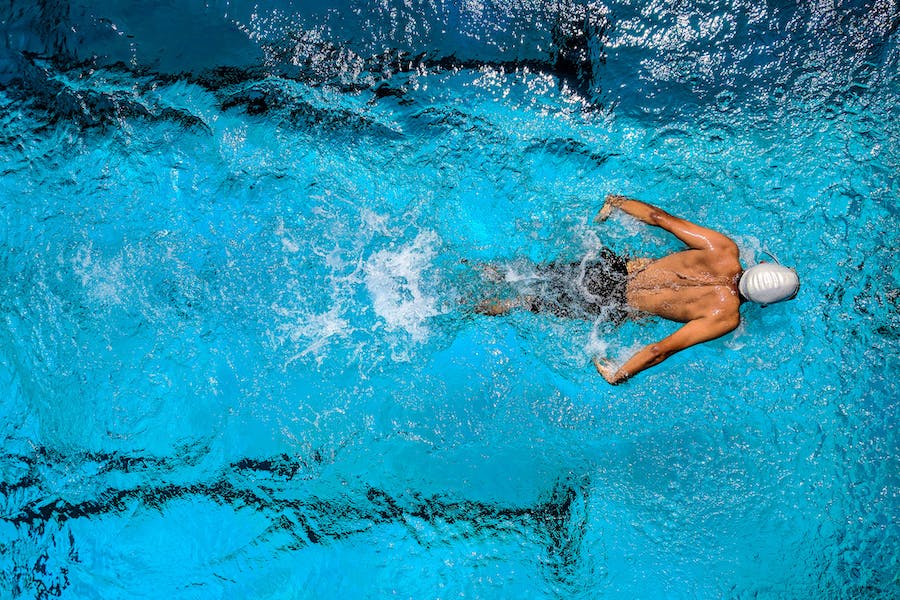Embarking on the journey of learning to swim is an exciting and beneficial experience for both children and parents. Shared swimming lessons, where parents and children learn together, offer unique advantages and create memorable experiences. This article explores the benefits, provides tips, and addresses some common challenges associated with these lessons, ensuring you make the most of your aquatic adventure.
The Unique Appeal Of Shared Swimming Classes
Building Trust and Security
- Emotional Support: For many children, the presence of a parent in the water can be incredibly reassuring. This emotional support can help overcome fears and anxieties associated with water.
- Trust Building: Shared lessons strengthen the trust bond between parent and child, as they rely on and support each other through the learning process.
Enhanced Motivation
- Role Modeling: Children often mimic their parents’ actions and attitudes. Seeing their parents actively participating and enjoying the lessons can significantly boost their motivation and enthusiasm.
- Mutual Encouragement: The journey of learning together allows for shared encouragement, where both parent and child motivate each other.
In-Depth Benefits for Children and Parents
Benefits for Children
- Social Skills Development: Learning alongside parents and other children can enhance a child’s social skills, teaching them cooperation and communication in a group setting.
- Customized Learning: Parents understand their children’s needs and can help tailor the learning process to suit their pace and style.
Benefits for Parents
- Improves Parenting Skills: This shared experience can improve communication and understanding between parent and child, translating to better parenting skills.
- Creates a Healthy Routine: Regular swim lessons provide a structured, healthy activity for both parent and child, establishing a routine of physical fitness.
Practical Tips for Maximizing the Shared Swim Lesson Experience
Pre-Lesson Preparation
- Setting Goals: Discuss and set realistic goals for each lesson to maintain focus and direction.
- Relaxation Techniques: Engaging in simple relaxation techniques before lessons can help both parent and child enter the water in a calm and receptive state.
Active Participation
- Join in the Fun: Don’t just observe – participate actively in the games and exercises. This enhances the fun factor and learning experience for your child.
- Stay Engaged: Maintain eye contact and stay engaged with your child throughout the lesson to foster connection and communication.
Post-Lesson Review
- Discuss and Plan: After each lesson, discuss what was learned and enjoyed. Plan for the next session based on this feedback.
- Recognize Progress: Acknowledge and celebrate the progress made, no matter how small, to keep spirits high and motivation strong.
Addressing Common Challenges
Adapting to Different Learning Styles
- Personalized Approach: Be prepared to adapt to different teaching methods that cater to your child’s unique learning style.
- Open Communication with Instructor: Maintain open communication with the swimming instructor to tailor lessons to your and your child’s needs.
Balancing Fun and Learning
- Engaging Activities: Look for programs that balance skill development with fun activities to keep the interest alive.
- Game-Based Learning: Incorporate games and playful activities into practice sessions to reinforce skills in an enjoyable way.
The Role of Swimming Schools in Shared Lessons
- Expert Guidance: Reputable swim schools like SwimRight Academy offer programs specially designed for parent-child lessons, guided by professional instructors.
- Structured Curriculum: These schools provide a structured curriculum that progresses from basic water familiarity to more advanced swimming skills.
The Social and Community Benefits
Shared swimming lessons can also be a springboard for wider social interactions and community engagement:
- Networking Opportunity: These lessons can serve as a networking platform, allowing parents to connect with other like-minded individuals.
- Community Events: Participating in swim school events and competitions can further enhance the sense of community and belonging.
The Enduring Benefits of Swimming Together
Shared swimming lessons for parents and children are more than just learning how to swim. They are an opportunity to bond, develop mutual trust, and create joyful memories. They also offer numerous benefits in terms of physical health, emotional well-being, and social development. By embracing this unique learning experience with the right mindset and preparation, parents and children can embark on an enriching swimming journey together, reaping lifelong benefits and shared joys along the way. So, dive into this rewarding experience and watch as the waves of progress and happiness ripple through your family’s life.

Frequently Asked Questions About Shared Swimming Lessons
Q1: What is the Ideal Age for Children to Start Shared Swimming Lessons?
A1: Shared swimming lessons can start as early as when a child is comfortable in a water environment, typically around the age of 6 months to 3 years. Starting early can help in acclimating children to water and developing foundational swimming skills.
Q2: How Do Shared Swimming Lessons Differ from Regular Child-Only Lessons?
A2: Shared swimming lessons are designed with both the parent and child in mind. They focus on building confidence, trust, and skills in a cooperative environment, whereas child-only lessons are more focused on individual child development and may progress at a pace set by the instructor.
Q3: Are Shared Swimming Lessons Effective for Children with Special Needs?
A3: Yes, shared lessons can be particularly beneficial for children with special needs. The presence of a parent can provide additional comfort and support, which can be crucial for children requiring extra attention. However, it’s important to communicate with the instructor beforehand to ensure the lesson plan meets the specific needs of the child.
Q4: What Should Parents and Children Wear for Shared Swimming Lessons?
A4: Both parents and children should wear comfortable, well-fitting swimsuits. For children, swim diapers may be required if they are not potty trained. Additionally, swim caps and goggles can be used for both comfort and safety.
Q5: How Can Parents Prepare Their Children for the First Shared Swimming Lesson?
A5: Preparation can include explaining what will happen during the lesson, introducing the concept of water safety, and ensuring the child is well-rested and fed. It’s also helpful to visit the swimming venue in advance to familiarize the child with the environment.
Q6: What are Some Key Safety Tips for Shared Swimming Lessons?
A6: Key safety tips include never leaving your child unattended, even if they are comfortable in water, always following the instructor’s guidelines, and ensuring any floatation devices are U.S. Coast Guard-approved. It’s also important to check the credentials of the swimming school and instructors.





